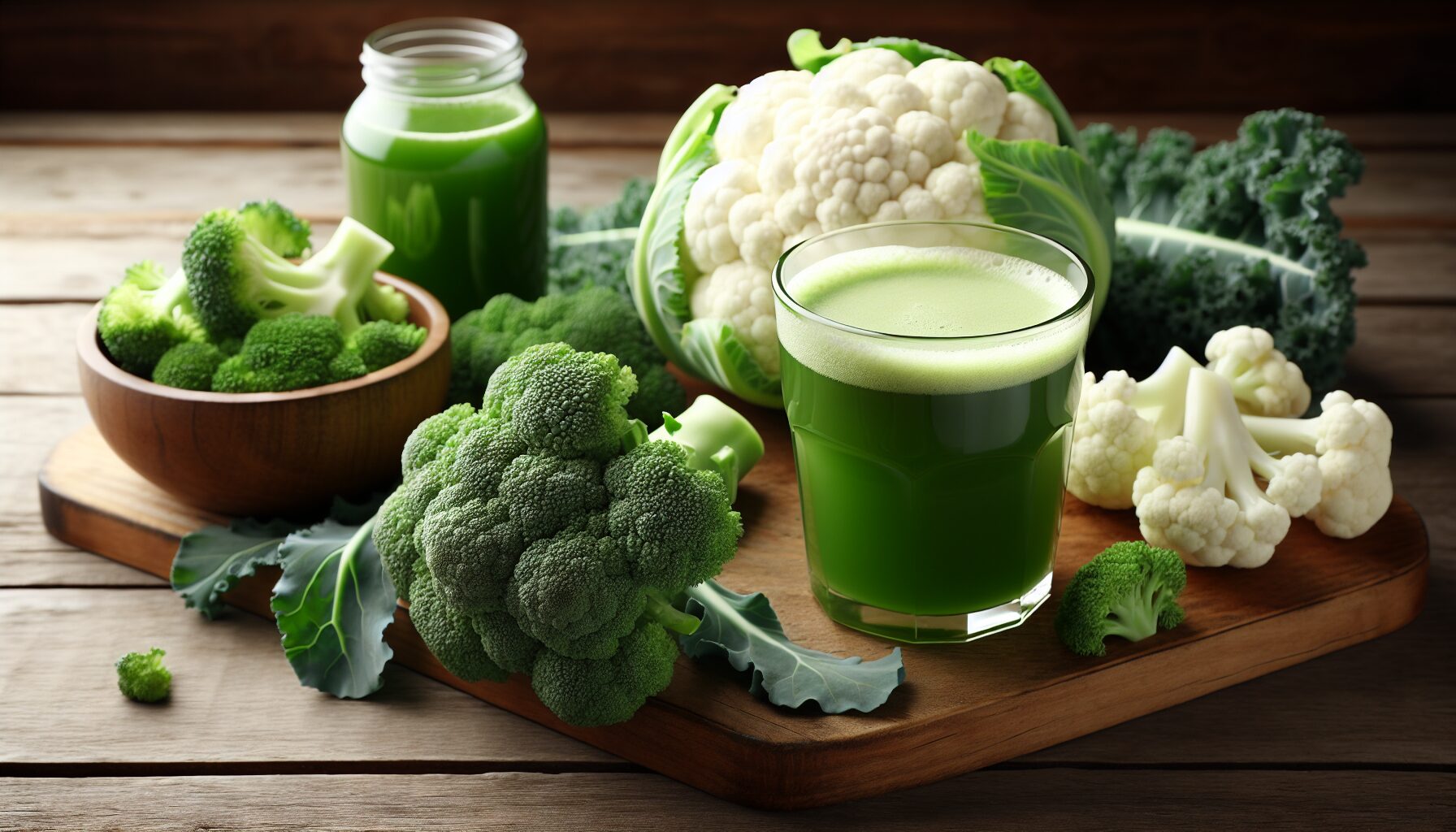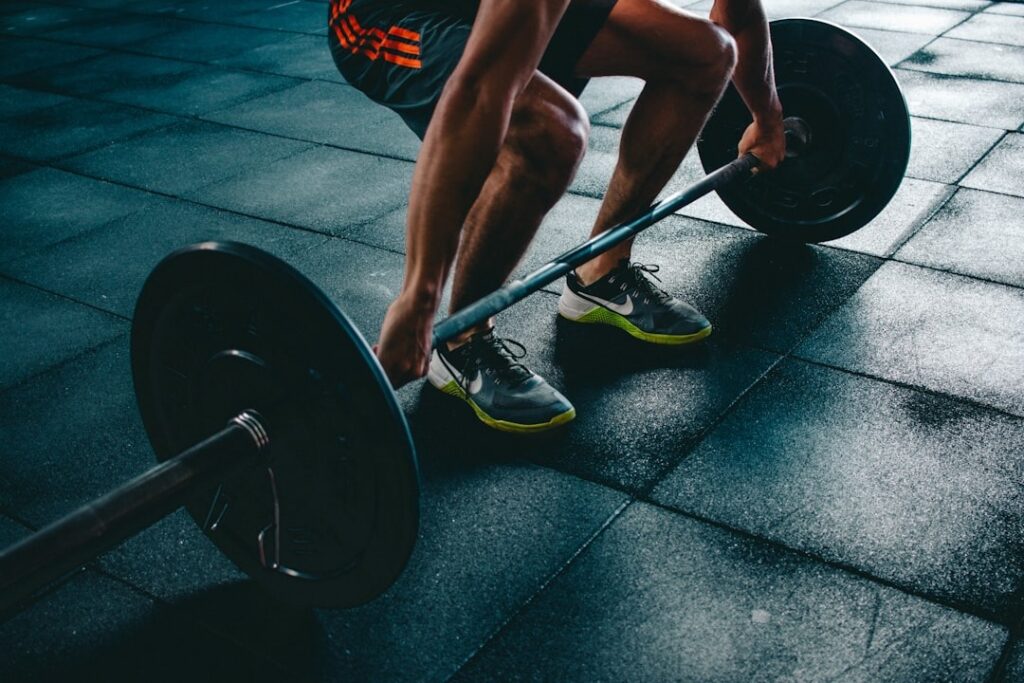
Sulforaphane Muscle Growth And Recovery Support Post Exercise
One of the most important parts of effective muscle building is optimal recovery and sulforaphane is a plant compound that may assist with muscle growth post exercise. Intense exercise puts the body under high levels of oxidative stress. Especially the skeletal muscles. This is because of the inflammatory process that accompanies heavy exercise.
The build-up of oxidising molecules or oxidative stress from muscle movement and metabolic processes contributes massively to muscle fatigue. Exercise of the muscle tissues needs optimal muscle recovery for growth, otherwise the tissue will become wasted away. This is called muscle atrophy, where muscle tissue wastes because of inadequate recovery. If muscle wastes away this results in a loss of strength, which is an undesirable outcome at the gym. Muscle recovery is so important for muscle growth.
This recovery process requires antioxidants to preserve the cells in the muscle after exercise induced inflammation. Recovery also needs antioxidants to support the metabolic building of new muscle tissue initiated by resistance exercise.
Antioxidant status is nearly as important as input nutrients like amino acids and vitamins that are needed for the muscle building metabolic processes. The body uses amino acids, sugars or carbohydrates and vitamins to build muscle tissue. These are the major building blocks that support new and old muscle cells.
For these reasons strong antioxidants like sulforaphane are a massive interest topic for muscle building. In a completely new study on how sulforaphane influences muscle growth, they looked into how the antioxidant sulforaphane can support muscle recovery after exhaustive exercise. We will be covering what they found here.

Sulforaphane
Sulforaphane is one of the most powerful antioxidants that scientific research has discovered. A major scoring point for sulforaphane is that it seems to be very bioavailable. The effects of sulforaphane are comparable to another sulfur containing antioxidant produced by the body, known as reduced glutathione. Reduced glutathione is known to be the body’s fall-back antioxidant, supporting with muscle recovery and the prevention of the cancer development in the body.
Antioxidants play really important roles in the body, supporting the metabolic processes within the body. Sulforaphane has only recently been studied in detail by researchers. It accumulates in high amounts in broccoli florets and young broccoli sprouts. Sulforaphane has also been identified in large amounts in other cruciferous vegetables such as cabbage, cauliflower and kale.
Sulforaphane is of research interest for its strong antioxidant powers that seem to assist with the prevention of breast, lung and skin cancers. Its antioxidant capacity has also been studied in relation to nerve cell protection and heart health. Research suggests that sulforaphane has direct actions on damaging radicals from oxidative stress and can protect delicate blood vessels from injury.
This has also created interest in sulforaphane for muscle growth and recovery because of its potential to support healthy metabolic reactions. Sulforaphane may be able to support healthy muscle building, avoiding cancer causing events that can occur through excessive inflammation or oxidative stress.
Sulforaphane For Muscle Growth And Recovery
One new study looked at how sulforaphane can support muscle growth. This completely new study wanted to see if sulforaphane use could reduce inflammation and oxidative stress post exercise. As we have mentioned, muscle recovery from inflammation is very important for supporting muscle growth.
This study found that the use of sulforaphane supported optimal recovery of muscle tissue following very exhaustive exercise. Sulforaphane was thought to successfully support optimal muscle metabolism of sugar during exercise. Sulforaphane also reduced the number of inflammatory genes being expressed, reducing exhaustive oxidative stress in the body from exercise. These results suggest that taking sulforaphane, or improving sulforaphane intake through your food, could improve muscle recovery and therefore muscle growth.
While improved muscle recovery is of importance for the growth of all muscle tissues. There are certain muscle tissues that require more oxygenation than others and those that build up more oxidative stress too. Sulforaphane may be able to support optimal muscle performance, growth potential, heavy weightlifting capacity and improved muscle growth this way too. In a dual influencing process, sulforaphane can assist with muscle growth through improved lifting and recovery.

Other Studies Supporting Sulforaphane Use For Muscle Growth
The results of this completely new study on the influence of sulforaphane on muscle growth are really exciting for its future use as a supplemental support for intensive exercise. While there are studies available that discuss how sulforaphane would work in theory to prevent muscle atrophy, it is nice to see a study investigating this practically.
There is one similar study that came to the same conclusion as this one, it also supports the potential that sulforaphane can assist with preventing muscle loss. That is another really positive result for the use of sulforaphane to support muscle growth after intensive exercise. In a slightly different type of study, muscle mass, strength and running capacity were improved with sulforaphane use. There is a theory that sulforaphane could protect your mitochondria, the energy producing parts of your cells, leading to a higher exercise output from mitochondrial duplications.
Some very significant statistical increases in strength were seen in the animals treated with sulforaphane. In addition, markers of muscle damage and oxidative stress were greatly reduced with sulforaphane use. This supports the theory that sulforaphane can act on the muscles to support reductions in oxidative stress that restrict muscle capacity.
Of course, as we’ve mentioned, excessive accumulation of reactive oxygen species results in a loss of physical performance through fatigue. Another study found that taking sulforaphane before exercise could also protect the body from accumulative muscle damage. While taking sulforaphane was also seen to reduce muscle soreness from exercise.
The theories of various studies now support the practical demonstration of this new study, that sulforaphane could be a supporting nutraceutical for exhaustive exercise.
Antioxidant Supplementation In Elite Exercise Regimes
Many elite level athletes turn to strong antioxidant supplements, like sulforaphane, to support their performance and to potentially improve their athletic career length. This is because of how important antioxidant recovery is for preserving the muscles and helping muscle recovery. Other potential performance enhancing antioxidants include vitamins C and E. Antioxidants are also vital for protecting long term heart health. Antioxidants, such as sulforaphane, can also induce detoxification pathways and this is also very important for elite athletes.
Antioxidant supplements are considered to be really uninvasive and also a natural means to improve oxidative stress levels during training. For example, reduced glutathione supplementation suppresses muscle fatigue through streamlined muscle cell metabolism. As we’ve mentioned, this is one of the body’s major antioxidants.
Elite athletes consider it to be very important to integrate antioxidants into their diet in addition to vitamins and minerals. Elite athletes take nutrition so seriously that some create a tailormade diet following clinical assessment. The results from the sulforaphane study suggest that sulforaphane supplements may be integrated into these sorts of regimes soon.

Summary
Supporting muscle growth involves managing oxidative stress after exercise that occurs because of muscle metabolic processes and inflammation. For the muscle recovery process, antioxidants are nearly as important as proteins or vitamins.
Optimal muscle recovery needs antioxidants to support with the metabolic building of new muscle tissue that is initiated by resistance exercise. Without proper recovery there would be more muscle wasting, or atrophy compared to muscle growth.
Sulforaphane is an antioxidant plant compound that could assist with muscle growth post exercise. The theory in sulforaphane antioxidant research is very clear. As a result, it is a massive interest topic for muscle building. The sheer power of the antioxidant abilities of sulforaphane within the body can be seen through cancer prevention research. It seems to have direct neutralizing effects on damaging radicals. Sulforaphane is also very bioavailable, accumulating in high quantities in cruciferous vegetables including broccoli florets and young broccoli sprouts.
One new study looked at how sulforaphane can support muscle growth. This study found that sulforaphane supports optimal glucose metabolism, while also reducing exhaustive oxidative stress in the body and muscles. Sulforaphane could support optimal muscle recovery and muscle performance too, which enhances overall muscle growth. The improved oxidative status in muscle cells could improve lifting capacity. Similar studies also support these findings.
The results of this completely new study revealing how sulforaphane could influence muscle recovery and growth are really exciting. They support the use of sulforaphane as a potential supplemental support for intensive exercise.
For more interesting articles, see the main articles page below.





